Discover 15 hidden attractions, cool sights, and unusual things to do in Öland (Sweden). Don't miss out on these must-see attractions: Eketorp, Långe Jan, and Saint Birgitta's chapel. Also, be sure to include Ismantorp Fortress in your itinerary.
Below, you can find the list of the most amazing places you should visit in Öland (Kalmar).
Table of Contents
Eketorp
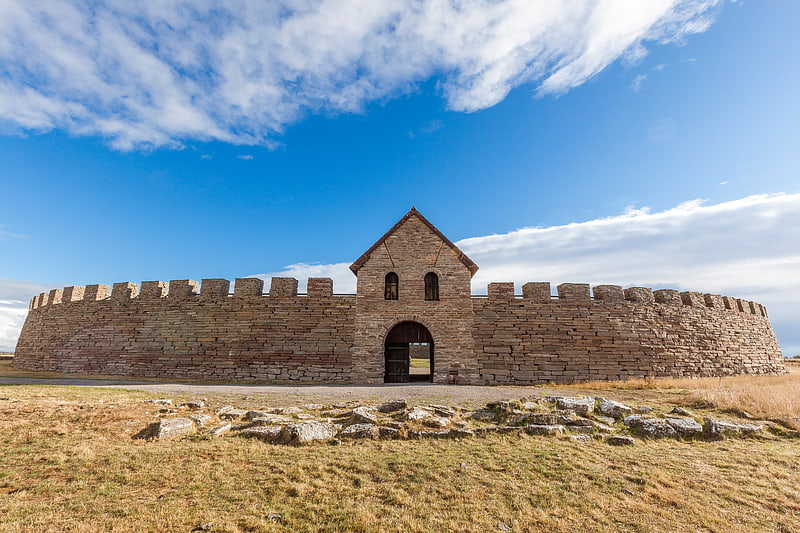
Reconstructed 4th-century fortress. Eketorp is an Iron Age hillfort, located on southeastern Öland, Sweden, and extensively reconstructed and enlarged in the Middle Ages. Throughout the ages the fortification has served a variety of somewhat differing uses: from defensive ringfort, to medieval safe haven and thence a cavalry garrison. In the 20th century it was further reconstructed to become a heavily visited tourist site and a location for re-enactment of medieval battles. Eketorp is the only one of the 19 known prehistoric fortifications on Öland that has been completely excavated, yielding a total of over 24,000 individual artifacts. The entirety of southern Öland has been designated as a World Heritage Site by UNESCO. The Eketorp fortification is often referred to as Eketorp Castle.[1]
Långe Jan

Lighthouse in Ottenby, Sweden. Långe Jan is a Swedish lighthouse located at the south cape of Öland in the Baltic Sea, Sweden's second largest island. It is one of Sweden's most famous lighthouses along with Kullen, Vinga and Landsort, and also the tallest lighthouse in Sweden.
The lighthouse was built in 1785, probably by Russian prisoners of war. The tower was built of stone from an old chapel. Originally the light was an open fire, and the tower was unpainted. It was painted white in 1845, and the same year the tower's lantern was installed, to house a colza oil lamp. A couple of years later a black band was added to the tower.
The lighthouse remains in use and is remote-controlled by the Swedish Maritime Administration in Norrköping. During the summer season it is possible to climb the tower, for a small fee.
The buildings surrounding the tower form Ottenby birding station.[2]
Saint Birgitta's chapel
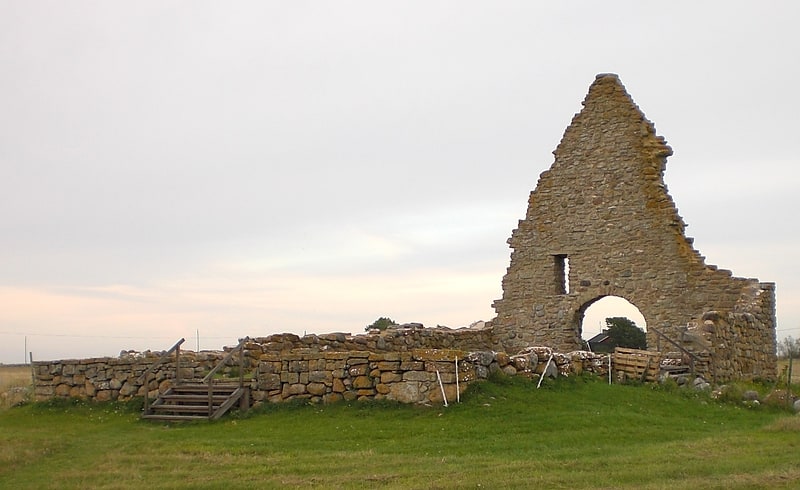
Also known as: S:ta Britas kapell
Historical landmark in Sweden. Saint Birgitta's chapel is located on the east coast of the island of Öland, Sweden, some four kilometers from the village of Bredsättra in Bredsättra socken, Borgholm Municipality, in a marshy area called Kapelludden. The chapel dates from the 13th century; today nothing remains but the foundation and the eastern wall, the western wall having fallen down during a storm in 1914.[3]
Ismantorp Fortress
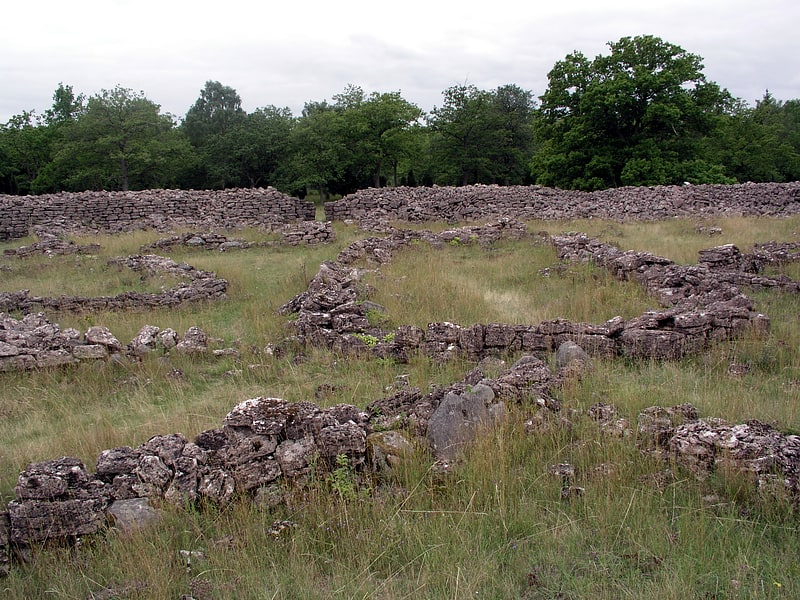
Also known as: Ismantorps fornborg
Historical landmark in Sweden. Ismantorp Fortress is the ruins of a ringfort located on Öland Island in Sweden.[4]
Borgholm Castle
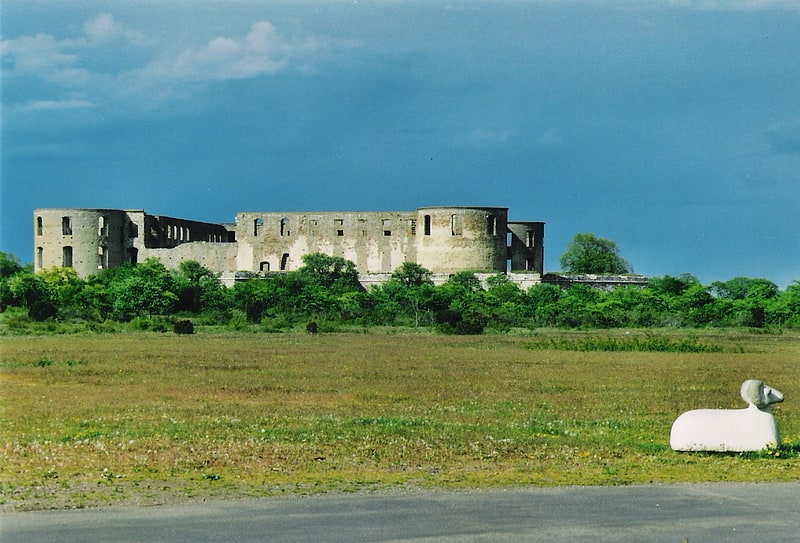
Also known as: Borgholms slottsruin
17th-century Baroque castle ruins. Borgholm Castle in Borgholm, Sweden, is today only a ruin of the fortress that was first built in the second half of the 13th century and rebuilt many times in later centuries. It is linked to Halltorp estate, to the south. The castle was destroyed in a fire on 14 October 1806.[5]
Gärdslösa Church

Also known as: Gärdslösa kyrka
Gärdslösa Church is a Lutheran church on the Swedish island Öland, in the Baltic Sea. It belongs to the Diocese of Växjö.[6]
Neptune's fields
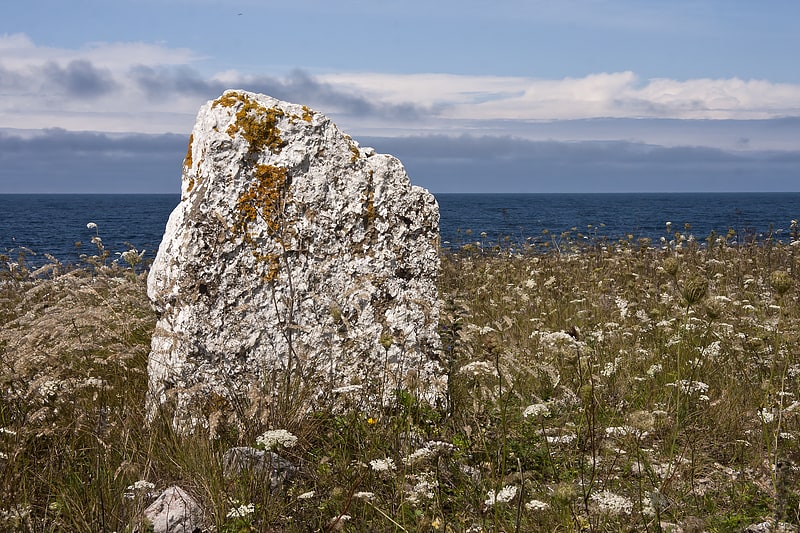
Also known as: Neptuni åkrar
Nature reserve in Sweden. Neptune's fields is a nature reserve in the north of the island of Öland, Sweden. Located in Borgholm Municipality along the Kalmar Strait, north of the village of Byxelkrok, it consists of a long stretch of cobble beach covered with Echium vulgare which blossoms in June and July, coloring the entire area blue. The cobble stones result from stones left during the last ice age that eroded through the action of the waves, and they are interspersed with fossils from Trilobites and Brachiopods.
The place is a well-known tourist attraction. It was named by Carl Linnaeus, who visited the place on his 1741 journey to the island.[7]
Stora Alvaret
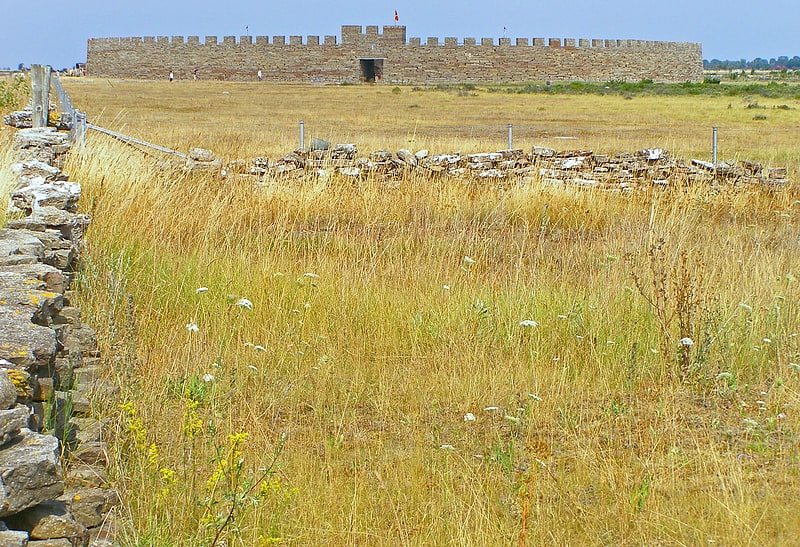
Also known as: Södra Ölands odlingslandskap
The agricultural landscape of southern Öland is an area of more than 56,000 hectares located on the island of Öland, Sweden. It includes Stora alvaret, a limestone plateau of around half that surface. Stora alvaret is a dagger-shaped area almost 40 km long and about 10 km at its widest north end. This limestone plain, around a quarter of the surface of the island, is the most extended of its kind in Europe. As a result of the thin layer of soil and high pH levels, it presents a wide range of plants, including many rare species.
The agricultural landscape of southern Öland was designated as a World Heritage Site by UNESCO in 2000, for the extraordinary biodiversity in this place, and its prehistory as well as the way how man has adapted to the natural conditions.[8]
Halltorps hage

Nature reserve in Sweden. Halltorps hage is a nature reserve on the island of Öland in Borgholm Municipality, Kalmar County, Sweden.
The nature reserve serves to protect an area with varied deciduous forest. At the heart of the reserve is a pasture dominated by several large oaks. Other trees found in the reserve include ash, linden, maple and hornbeam. Flowers such as spring vetchling, yellow anemone and the unusual Veronica montana grow in the nature reserve. The nature reserve is part of the EU-wide Natura 2000-network.[9]
Alböke Church
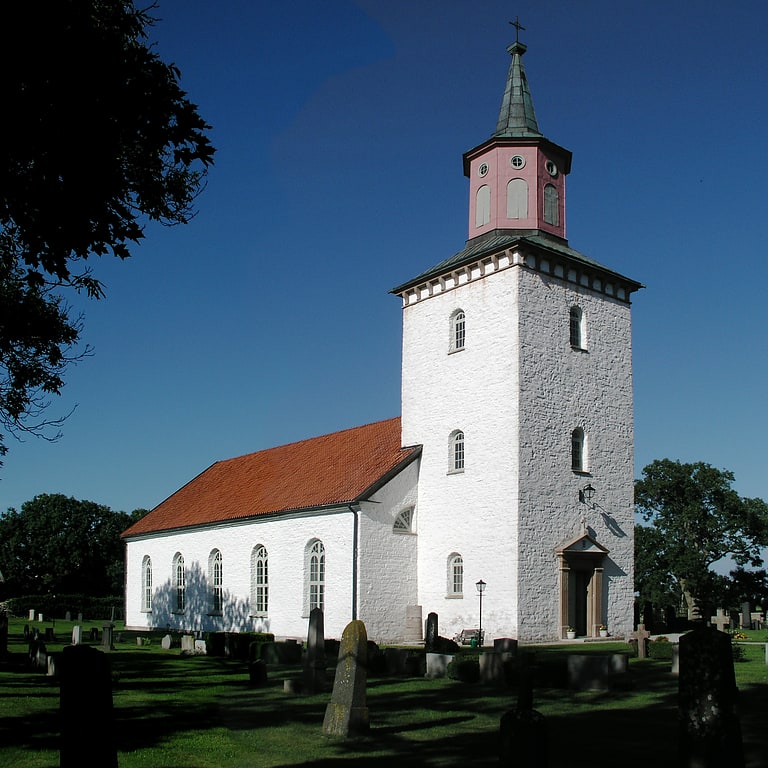
Also known as: Alböke kyrka
Church in Sweden. Alböke Church is a Lutheran church on the Swedish island Öland, in the Baltic Sea. It belongs to the Diocese of Växjö.[10]
Address: Alböke Kyrkgata 1, 387 96 Köpingsvik
Sandby borg
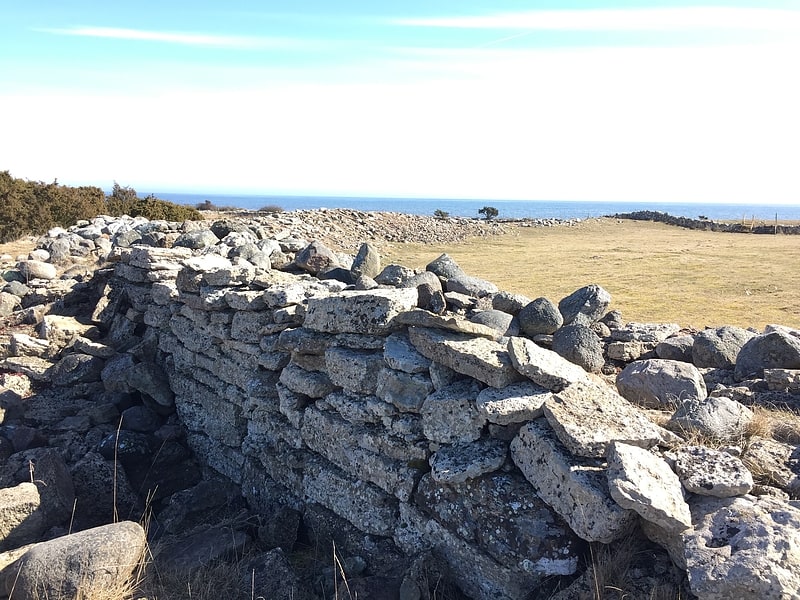
Historical landmark in Södra Sandby, Sweden. Sandby borg is an Iron Age ringfort, one of at least 15 on the island of Öland, Sweden. It sits about 2 kilometers southeast of Södra Sandby village in Sandby parish in southeastern Öland. It is close to the village of Gårdby.
From 2011, the fort has been the subject of excavations, the results of which show that it was the scene of a massacre in the late fifth century AD. The victims of the massacre were never buried, but are found lying as they fell, inside the houses and scattered on the streets of the fort. This has resulted in a unique snapshot-characteristic of the archaeology at Sandby borg, providing new insights both to violence and conflict in the Iron Age, and concerning everyday life in the ringfort.[11]
Högby Lighthouse
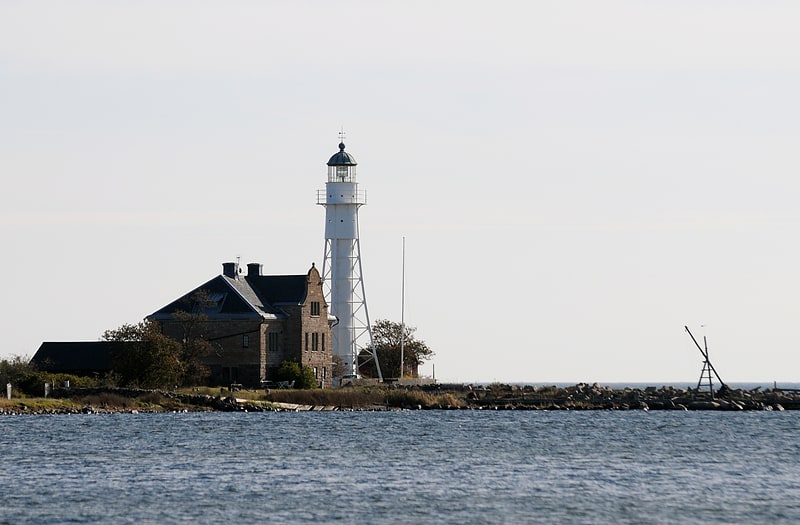
Also known as: Högby fyr
Lighthouse in Löttorp, Sweden. Högby Lighthouse is a Swedish lightstation. The lighthouse is built of iron and painted white. The design by architect Johan Höjer is unique to Sweden. The tower was exhibited at the Stockholm Exposition in 1897 before being located in Högby on a narrow peninsula. The flame ran on kerosene at first, and was updated with a gas mantle light in 1908. It was electrified in 1945 with a 1000 watt bulb and fully automated in 1967. Today the light runs with a faint 60 watt bulb, and the old rotating Fresnel lens has been replaced. The lighthouse is owned by The Swedish Maritime Administration.
Both the keeper's house and lighthouse is protected as a culturally important building since 1978. Today the keeper's house is a private residence to an artist and contains an art studio and showroom.[12]
Karlevi Runestone
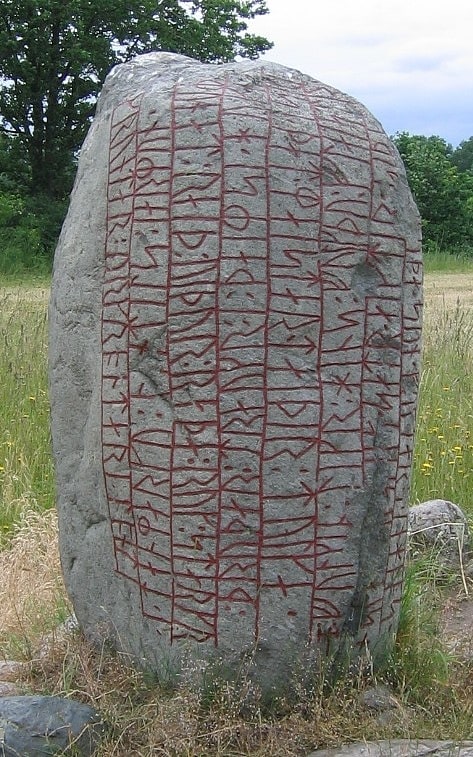
Also known as: Karlevistenen
Runestone dating to the 10th century. The Karlevi Runestone, designated as Öl 1 by Rundata, is commonly dated to the late 10th century and located near the Kalmarsund straight in Karlevi on the island of Öland, Sweden. It is one of the most notable and prominent runestones and constitutes the oldest record of a stanza of skaldic verse.[13]
Egby kyrka
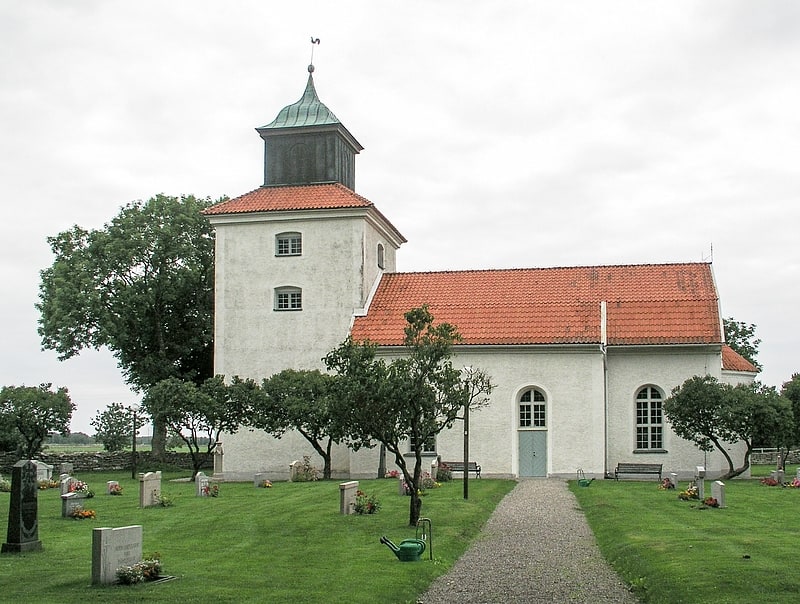
Church in Sweden. Egby Church is a Lutheran church on the Swedish island Öland, in the Baltic Sea. It belongs to the Diocese of Växjö.[14]
Kapelludden lighthouse
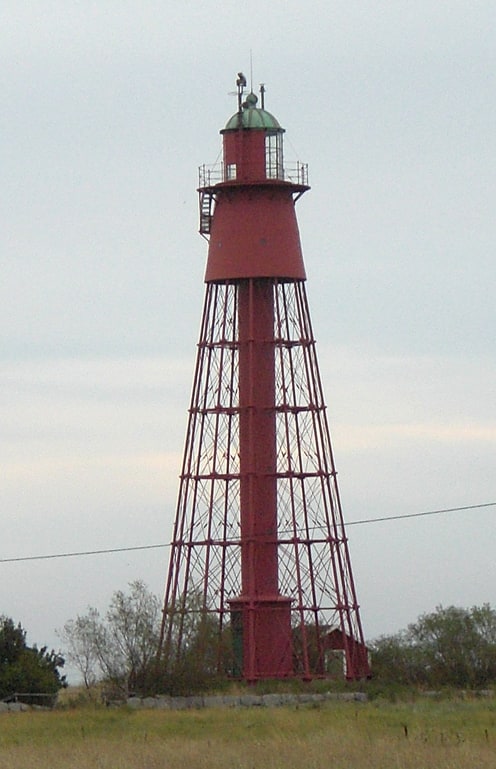
Also known as: Kapelluddens fyr
Historical landmark in Sweden. The lighthouse at Kapelludden, on the east coast of the Swedish island of Öland, was built and lit in 1871. It is located in a wetland near the ruin of a 13th-century chapel, in Bredsättra socken, Borgholm Municipality.
The lighthouse is 32 meters high and was built by A.T. Gellerstedt.[15]